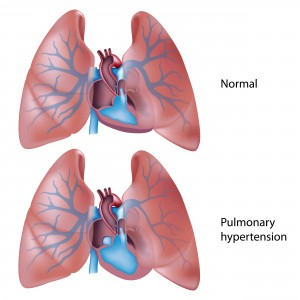 A new study entitled “The Impact of Targeted Therapies for Pulmonary Hypertension on Pediatric Intraoperative Morbidity or Mortality” reports that children with pulmonary hypertension are still a risk-group for anesthesia and surgery, due to a high risk of post-operative complications and even death. The study was published in Anesthesia & Analgesia.
A new study entitled “The Impact of Targeted Therapies for Pulmonary Hypertension on Pediatric Intraoperative Morbidity or Mortality” reports that children with pulmonary hypertension are still a risk-group for anesthesia and surgery, due to a high risk of post-operative complications and even death. The study was published in Anesthesia & Analgesia.
Pulmonary hypertension is a condition characterized by high blood pressure in the arteries of the lungs. This results in an extra effort needed by the heart in order to be able to pump blood to the lungs. Patients with pulmonary hypertension who undergo anesthesia have a high risk of mortality. In the last 5 years, research has developed long-term oral treatments to improve patients’ outcomes involving surgery with anesthesia, which resulted in a 43% reduction of both children and adult mortality. As a result, patients with PH are often given general anesthesia during surgery.
In this study, the authors aimed to update the relationship between anesthesia mortality and pulmonary hypertension patients. The team analyzed 122 infants and children with pulmonary hypertension who were submitted to surgical procedures with anesthesia (in total 284 procedures) between 2008 and 2012. The authors registered a 3.9% and 3.2% minor and major procedure complications, respectively, which were maintained independently of patients receiving new pulmonary hypertension treatments or not. Notably, however, therapy with disease-modifying drugs resulted in no improvement on procedure complications in the groups analyzed when stratified for disease severity. In fact, the authors show that children affected with more severe pulmonary hypertension exhibited significantly higher rates in both surgery-related complications and death. This rate was maintained even for those treated with home oxygen therapy.
[adrotate group=”4″]
Additionally, the team identified age as a serious risk factor, with infants aged not more than five months exhibiting six times higher risks of developing complications when compared to older children (who were at least two years of age).
The authors therefore highlight that their findings identified anesthesia morbidity and mortality in children with pulmonary hypertension in the presence of new treatments; and that age and disease severity are two main risk factors for anesthesia-associated complications. They note that further studies — most importantly a multi center study — are needed to further confirm and understand the role of disease-modifying treatments and pulmonary hypertension in complications due to surgery and anesthesia.

